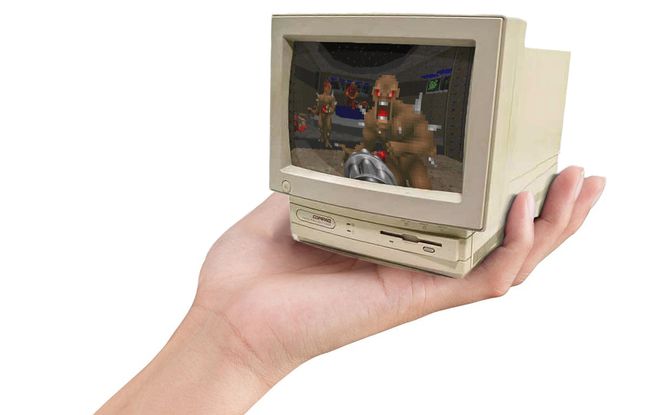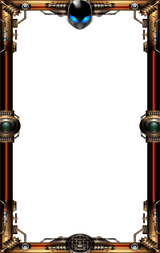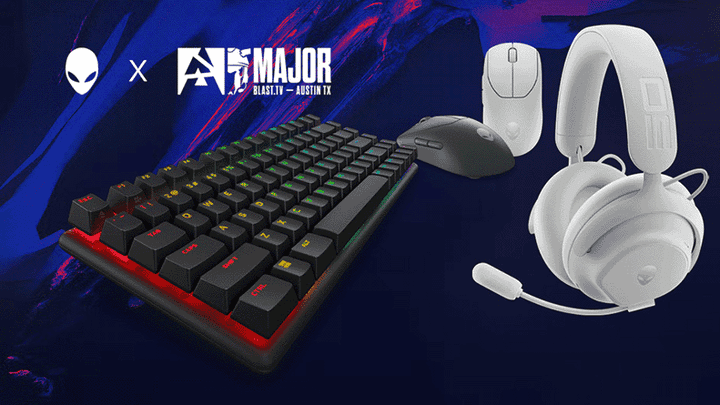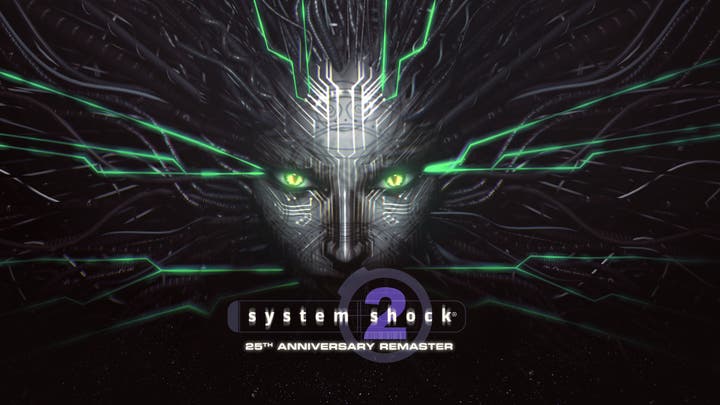What games would you put on a Classic PC?

The hubbub around Nintendo's SNES Classic announcement this week had us wondering: what would an equivalent, retro PC look like if it released today, and what games would you put on it?
It's a fun thought exercise, but it also gets tough as you sit down to do it. How do you define where an era of PC gaming begins and ends? Doing it by calendar year is arbitrary. Distinctions between operating systems are murky. Pre-internet? Pre-CD-ROM? Pre-accelerated graphics? Does the jump to VGA represent a new generation?
After a lot of discussion, we felt that Intel's 486 processor represented one of the clearest PC gaming tree rings. Looking backward from the 486, you've got the golden age of the adventure genre, as well as the introduction of some of PC gaming's biggest franchises. After the 486, Intel's first Pentium processor kicked off an explosion of 3D games in 1996 (Quake, Tomb Raider), as well as the emergence of internet-connected games (Diablo, StarCraft, Ultima Online).
So, our criterion for this 'build' is games that ran on a 486 or earlier architecture, as identified by the original system requirements.
The SNES Classic has 21 games. These are the 21 installed on our Classic PC:
Civilization II
Microprose, 1996
If it has to be one Civ of the original two, it's this one, with its beautiful shift to isometric graphics, hammy FMV advisors (including a fake Elvis as your culture guy) and more complex additions that made it a deeper strategy game. I'd still play this in a browser every lunchtime if it was legal to do so. When you're exhausted by campaigns, you've still got Civ II's ludicrously busy WWII scenario, which is potentially another few hundred hours well spent. —Samuel Roberts
Commander Keen
id Software, 1990
Our device needs at least one traditional 2D platformer, and what better game than Commander Keen. Conceived by id Software as a tech demo illustrating a possible PC Mario port, Commander Keen is also emblematic of the 1990s shareware scene, which Apogee’s many platformers (Monster Bash, Crystal Caves, Duke Nukem) dominated. —Shaun Prescott
Day of the Tentacle
LucasArts, 1993
The funniest and smartest of LucasArts' many classic adventures, with challenging, mind-bending time travel puzzles and an endearingly goofy, self-aware cartoon style. It's set across three distinct time periods: colonial America, the present (well, the '90s), and a distant future ruled by evil tentacles. And you'll need to hop between the centuries to solve its absurd, long-winded, devilishly clever puzzles. —Andy Kelly
Doom
id Software, 1993
Slippery movement, frantic backpedaling, the grunts and wails of demons punctuating Robert Prince's score as you launch rockets in Mars-hell: it's the most '90s game produced by mankind. Doom paved the way for so much of what we play today, but it's held up perfectly with the help of an undying mod community. —Evan Lahti
This is the first game that scared me. The roars off in the distance, even if the ‘distance’ was a squat cardboard maze, felt more real than anything I’d experienced in a game. —Tyler Wilde
Duke Nukem 3D
3D Realms, 1996
I was a huge—huge—Doom fan back in the day, to the point that loving Duke Nukem 3D felt a little like betrayal. But I did love it. I loved the massive, sprawling levels, and blowing up entire buildings, and seeing myself in the mirror, and the machine gun with four barrels, and yes, even throwing money at the strippers. DN3D worked so well partly because the action was so great, but also because Duke himself was still the two-dimensional meathead action hero from his platforming days: Thick-headed and lowbrow, but free from the gross excesses of Duke Nukem Forever. —Andy Chalk
Lemmings
DMA Design, 1991
Just before my fifth birthday, my dad bought our family an Atari ST. At the time my most treasured videogame mascots were Sonic the Hedgehog and Super Mario, thus convincing four-year old me dozens of faceless and oddly dressed rodents could stand as likeable protagonists was a hard sell. That is, until I played Lemmings.
Even at such a young age, ordering each horde of critters around the puzzler's host of expertly designed levels was a total joy. Builders, bashers, miners, blockers—I took pride in assigning each worker's role and, as a result of my invariably crude puzzle tactics, 'Nuking' the entire lot and starting again was as much fun as sending each blue robe-donning, scruffy green hair-sporting sprite successfully home. I've since returned to enjoy its wonderful soundtrack, and to this day Mayhem mode still kicks my ass. —Joe Donnelly
Monkey Island 2: LeChuck's Revenge
LucasArts, 1991
The continuing adventures of hopeless pirate Guybrush Threepwood are genuinely funny, full of heart, and also—in the best possible way—absolutely infuriating. If you can beat it without glancing at a guide I’ll be amazed. But even if you do cheat, it’s still a joyous, raucous pirate adventure that oozes humour and personality. And there’s always lite mode, which bypasses some of the trickier bits entirely. —Andy Kelly
Myst
Cyan Worlds, 1993
The years have not been kind to Myst, with its pixel-hunt format, frustrating puzzles, and endless wandering (looking at different screens) as you try to figure out what the hell you're supposed to be doing. But at the time, wow. It seemed beautiful and alien and mysterious. I'd probably hate it if I ever tried it again, so I won't. —Chris Livingston
Yes, Myst was static and obtuse, and perfectly happy to leave players trapped and baffled by its bizarre, patience-testing puzzles. But it was also unlike anything we'd seen before—beautiful and alien and mysterious, you might say—and while it may seem diminished by the passage of time and the evolution of our expectations, what 25-year-old game doesn't? It was a magical and magnificent achievement in 1993, and it remains one of the single most influential and wonderful videogames ever created. —Andy Chalk
Prince of Persia
Brøderbund, 1990
"The guy here looks real. No, seriously, he moves like a real dude. Come here, look. Watch! Look at him run. Now see how he slides to a stop, and then turns to head in the other direction? And look, he can jump and catch ledges and stuff. Look! I know, right? I told you, it's like they filmed a real guy or something, and then jammed him into the game somehow. I dunno how they did it, but damn, it's awesome! I just wish I could get past this fat guy with the sword. Man, he's tough."—Andy Chalk, circa 1989
I can’t remember how far I ever made it in Prince of Persia—I think my mom may have actually been the pro—but those jumping animations were almost the whole appeal, as Andy recalls. —Tyler Wilde
Star Control 2
Toys for Bob, 1992
The original Star Control was a Spacewar-style game with 1-on-1 battles, and the sequel expanded on that to include more ships, each with unique weapons and tactics, coupled with a story involving humorous aliens, and a quest to save the galaxy. The core of the game remains the frenetic battles, jockeying for position around a gravity and putting your twitch reflexes to good use. A quick 'melee' mode provides direct access to the battles without the story, featuring split-screen shared keyboard controls. Older keyboards often had issues with too many concurrent keys being used, another form of strategy (aka, cheating) and a great way to start fights. I remember playing the game for hours with friends, 'winner stays' style, cheering and laughing at the spectacle of the gladiator battles—both on the screen and at the keyboard. If you never got a chance to experience the game, the source code was released under GPL in 2002, and has found continued existence as The Ur-Quan Masters, complete with remastered audio tracks. —Jarred Walton
Star Wars: Dark Forces
LucasArts, 1995
Dark Forces could have just been a weak Doom clone with stormtroopers instead of imps, but you could look up and down. You could look up and down. Also, it was just a generally great game, with excellent level and sound design that let you really feel like you'd stepped into the Star Wars universe. (Boba Fett, the guy defeated by a blind man swinging a stick in the films, was way OP though.) —Chris Livingston
Star Wars: TIE Fighter
LucasArts, 1994
After a childhood spent wanting to be the reluctantly heroic Han Solo with a Wookie bestie, I don't think I ever once felt the urge to join the Empire, until TIE Fighter came along and suddenly made me realize that blowing up rebel scum was completely awesome. I guess it's just a matter of perspective, but when you're targeting those plucky rebel pilots and turning their X-Wings into space dust, The Emperor doesn't seem like such a bad guy after all. —Chris Livingston
SimCity 2000
Maxis, 1993
It pretty much set the standard for all city builders to come. It smartly switched to an isometric view rather than the top-down view of the original and added a much deeper financial simulation to let us feel like we were really running a city. Plus, after obsessing over your tiny, gleaming metropolis for days or weeks on end, you could summon a UFO to wipe it out, and then rebuild. —Chris Livingston
System Shock
Looking Glass, 1994
An immersive sim hellbent on using every key on the keyboard (and half of them just for moving, leaning, and looking around). Comically complex, perhaps, but get over the control scheme and you could immerse yourself in the labyrinthine hallways of an abandoned space station, full of creepy bad guys, audio logs, cool cyberpunk body mods, and so much other cool shit, it's no wonder developers have basically been making new versions of System Shock for 20 years and counting. —Wes Fenlon
The Oregon Trail, Classic Edition
MECC, 1990
They say it was ‘educational,’ but I was most interested in the hunting minigame and the terrible deaths my friends and I suffered. (I guess I did learn what dysentery was.) But now I see the real genius of Oregon Trail, which was definitely not shooting deer. Its event-by-event format, unpredictability and permanent death—it was a board game, really, with event cards and dice rolls—is still being replicated 27 years later in games like FTL and 80 Days. —Tyler
Ultima Underworld
Looking Glass, 1992
Ultima Underworld, to put it bluntly, is the single greatest dungeon crawler ever created. And it wasn't just a technological quantum leap forward: Its subterranean world was multi-layered and complex, with good ghouls and bad humans and a troll who wanted nothing more than a taste of home. It's been a quarter of a century since Ultima Underworld came out, and for all its wrinkles and blemishes (and damn near impenetrable interface), it remains an unsurpassed benchmark of the genre. —Andy Chalk
Ultima VI: The False Prophet
Origin Systems, 1990
No way this list would be complete without Lord British. Richard Garriott and Warren Spector designed one of the best of the Ultimas—top three at least—remembered especially for its story, which brings issues of prejudice into Ultima’s fantasy morality dome. I’ll be honest, it’s been a long time since I’ve played any of these games, but our mini memory trove would surely be incomplete without at least one of these foundational RPGs. —Tyler Wilde
Warcraft II: Tides of Darkness
Warcraft 2's mines, with their cute interlocking stones and Kinkadian snow-dusted shacks, the slightly lopsided conic trees, and the music, especially the music, have all roosted in my memory like visions and sounds from another world. There’s a Winamp playlist in my head that plays "Job's done!" on repeat. Every click and sound and sprite in Warcraft 2 felt satisfying—even just the sound of chopping wood sticks in my mind. Warcraft 2 is a beautiful, and still fun, showcase for Blizzard’s particular design sense, which we see now in the way Hearthstone boards react to clicks with squishy sounds and rattling ironworks. —Tyler Wilde
Wasteland
I began an unhealthy obsession with the post-apocalypse with Wasteland on a C-64. You actually had to create a copy of the original floppy disk to play, as the game would write updates to the world based on your decisions. (You can still play the game today, as it was given away free on an old magazine at one point and later declared abandonware, though inXile later created a remastered version.)
Using an improved version of Interplay's Bard's Tale engine, only with guns and mutants in place of typical fantasy trope, you're part of the Desert Rangers, looking to restore order to the place. Who can forget the Servants of the Mushroom Cloud, with enigmatic leader Charmaine and her search for the Bloodstaff? Or the evil robots taking over Las Vegas, a city that survived the nuclear devastation because, word is, "the house was betting against a missile landing—and no one wins against the house." The game wouldn't get a proper sequel until late 2014 (Fallout was a 'spiritual successor'), headed up by some of the original developers. Have I mentioned I'm stoked for Wasteland 3? —Jarred Walton
Wing Commander III: Heart of the Tiger
Origin Systems, 1994
It took four CDs to contain Chris Roberts' aspirations, and a then-record $5 million budget to bring his Hollywood-grade sci-fi adventure to life on PC—how appropriate that this was a stepping stone to the most-crowdfunded thing ever (Star Citizen's $153 million and counting). The 11-minute opening FMV (above) rivals the length of modern intro sequences, and the choices you make throughout the campaign trigger different ending cutscenes where giant Jim Henson cats vaporize Luke Skywalker. Timeless. —Evan Lahti
X-COM: UFO Defense
Mythos Games/MicroProse, 1994
And finally, it wouldn't be a classic gaming PC without the chance to get gunned down by Snakemen before you can even leave your Skyranger. —Evan Lahti













